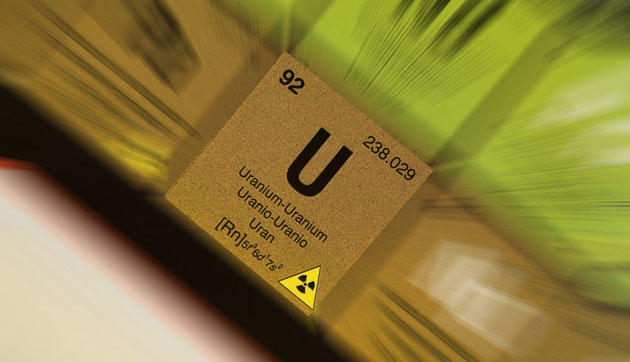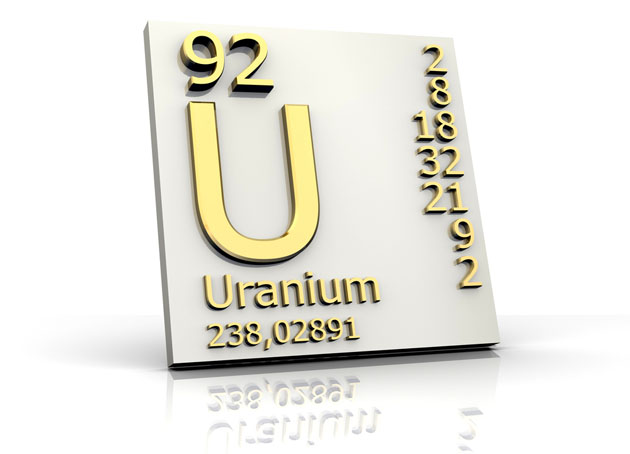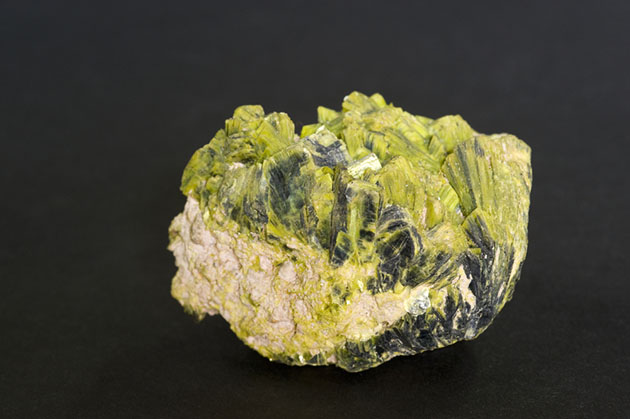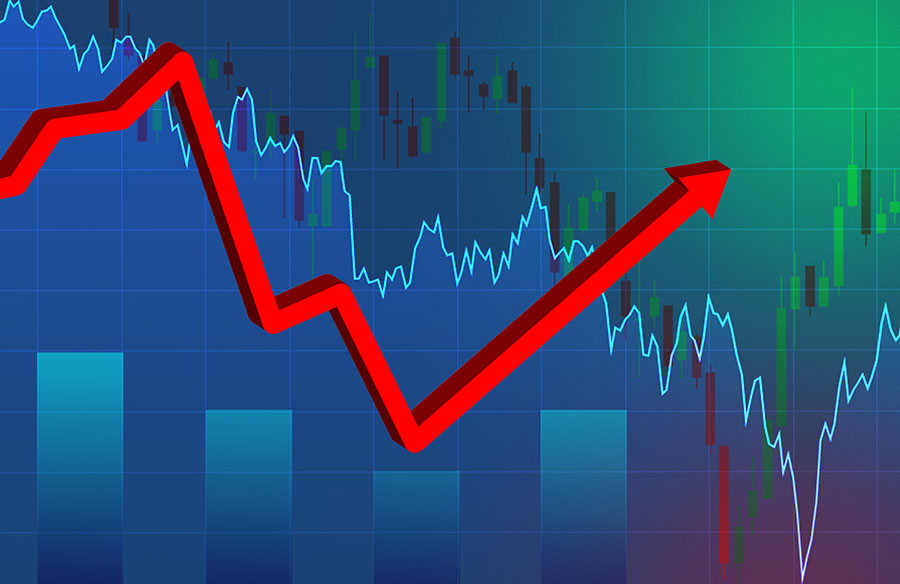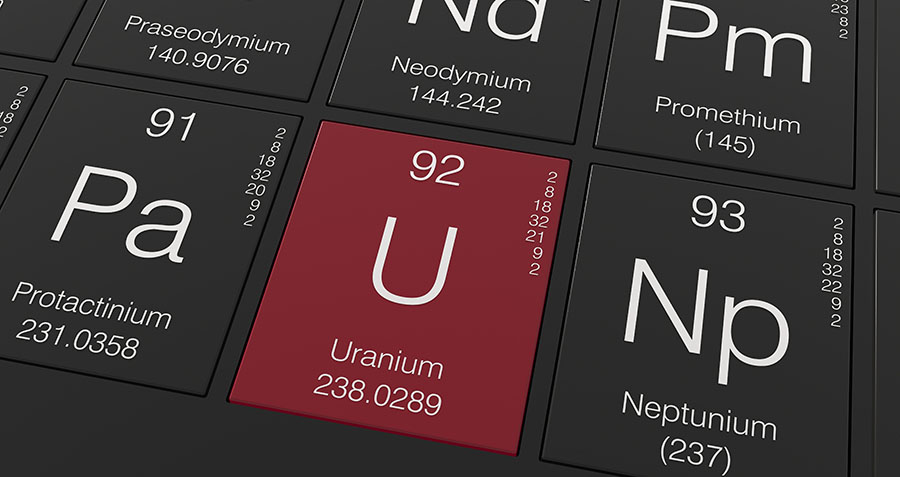The Energy Report: At the end of February, the Encompass Fund was up 20%, but by late April those gains had been reduced to 11%. Where does your performance stand now?
Marshall Berol: As of mid-June, the fund was down 6% year-to-date. We invest in a lot of resource companies and a number of the smaller firms have not done well recently. That is reflected in the fund's short-term performance. However, our objective is long-term capital appreciation.
The Encompass Fund was up 34% annualized over the three years ending March 31, 2012. We were in the top 1% of mutual funds in Morningstar's International Funds category and the subcategory of World Stock Funds.
TER: What could happen between now and the end of 2012 to boost your performance?
Malcolm Gissen: We are liquidating positions we do not feel will outperform over the next 6–18 months. We did the same thing at the end of 2008, and in 2009 the Encompass Fund produced a 137% return, largely because we stuck with the exceptional companies. We are doing the same thing now and are optimistic about the second half of the year.
MB: We are selling companies that are not as strong as they should be in terms of management, projects balance sheets and the ability to raise capital.
In the energy or resource sectors, access to capital is critical. Companies generally need to keep drilling and expanding production. Companies without sufficient current cash are struggling and should to be reduced or eliminated from a portfolio, leading to better performance when the markets turn, as we believe they will for energy and resource stocks.
TER: Investors withdrew capital from many funds over the last year. Are you experiencing that?
MG: We have had some withdrawals, but our investor group has confidence in us and shares our long-term perspective. Because our fund is cautious and keeps a reasonable amount of cash, we have not had to sell any securities we did not want to sell in order to produce cash to meet liquidations, even in 2009, when we produced the 137% return.
TER: Some pundits have called the Encompass Fund a "Ron Paul" portfolio. Are you comfortable with that description?
MB: I'm not sure what that means. If that is a reference to the fact that we have a decent portion of the portfolio in gold and silver, then yes, though Encompass has a far lower allocation to precious metals than Dr. Paul. We believe in gold and silver long-term. We also believe in resource companies because of a supply-demand imbalance that is likely to get worse. But the fund's portfolio has a far wider variety of resource companies and exposure to other sectors, which we understand the Paul Portfolio does not.
MG: And like Ron Paul, we are opposed to a lot of regulation. Marshall and I want to see our nation address overregulation of the resource sector, to make it easier and less time-consuming for companies to get into production.
I believe you can have laws that protect the environment and make it easier for resource companies to get into production and provide jobs and economic development. Intelligent regulation makes sense, but regulations affecting the resource sector in the U.S. have hampered the industry and cost millions of jobs and billions of dollars.
TER: One of your core holdings is U.S. Antimony Corp. (UAMY:OTCBB), which has seen remarkable gains. Does its performance embolden your belief that hard assets and resource stocks remain the right place to be?
MG: Yes. We bought U.S. Antimony in March 2011 at $0.40. Fifteen months later, its shares are trading over $4. It has production and mills to process the rock in Mexico. It has smelters in Mexico and Montana. We think the company is in the right place at the right time and has a very bright future ahead.
MB: We believed hard assets and resources were the place to be years before we invested in United States Antimony. We still feel that, for fundamental reasons beyond stock performance. Whether it is antimony, oil or natural gas, gold, silver or copper, the longer-term price trends for commodities are up because of supply and demand.
On the supply side, it is increasingly difficult to get anything out of the ground. You have the challenges of finding the resource, permitting issues, high costs, environmental regulations and the interests of the local populations, among others.
Demand continues because the world population is growing, in particular the rising middle class in countries like China and India. If you are going to generate electricity, you need oil, natural gas, coal and uranium.
When it comes to commodities like antimony, vanadium and cobalt, China's dominance as a supplier is a key factor. End users (such as industrial companies and governments) want a source of supply outside of China. Last year, the British Geological Survey issued a report on critical metals. Of the 58 listed, 26 are sourced primarily out of China, with antimony being the most difficult to obtain and very critical.
Looking at those underlying factors, which are unlikely to change, hard assets and resources are definitely the place to be.
TER: Malcolm, you told CNBC in April that you expect "much higher" uranium prices by year-end, based largely on the impending end of the U.S./Russia non-proliferation agreement to convert high-enriched uranium taken from dismantled Russian nuclear weapons into low-enriched uranium for nuclear fuels. It is scheduled to end in 2013, but Russian President Vladimir Putin said it could be extended if he gets a higher price. Is that likely?
MG: All indications from Putin's statements are that he would want a much higher price than I believe American utilities are willing to pay. We believe renewal of the treaty is unlikely.
Today, the 104 nuclear power plants operating in the U.S. get 45% of their uranium from Russia through this program. There are more than 50 nuclear power plants being built worldwide, an estimated 26 of them in China. We think there will be uranium shortages and the need for more production, driving uranium prices up between now and the end of 2013, when the supply of Russian weapon systems' uranium dries up.
MB: While there has been a deficit in new production of uranium (180 million pounds [180 Mlb] per year used in nuclear power plants, vs. 110 Mlb annual new production), there will be an even greater spread between supply and demand when these new plants come online over the next one to three years, not to mention the dozens more reactors now on the drawing boards.
TER: The Japanese government recently ordered the restart of two nuclear reactors in Kansai Province. Did you buy on that news?
MB: We recently added to our uranium company holdings, but this is not a market to be aggressively buying anything. The Encompass Fund has roughly 8% of its portfolio in uranium company stocks. We will probably increase that percentage.
MG: We see uranium companies as deeply undervalued. A patient investor willing to hold these companies for two or three years is likely to have very nice profits.
TER: What are some of your larger uranium holdings?
MB: One of the larger positions we have in uranium companies is in Uranium Energy Corp. (UEC:NYSE.A). It went into production in south Texas at the end of 2010, is increasing production and expects to bring a second mining project into production over the next several months. Analysts estimate it will be profitable to the bottom line in the next fiscal year, which ends July 2013. Right now, it is cash-flow positive in its mining and processing operations.
We like that this is an American company producing uranium in the U.S., although it also has a very large land holding in Paraguay that it anticipates developing.
TER: UEC has a lot of exposure to upward momentum in the uranium price. Do you expect gains similar to those you have already seen if the uranium price increases in the next year?
MB: When Fukushima happened, short-term uranium prices were $65 a pound (lb) and long-term $85/lb. After Fukushima, short-term contract prices went to $40/lb and long-term prices down to $55/lb. Subsequently, short-term prices have been in the $50–55 range for quite some time and the long-term price is about $65.
We think the short-term prices, where people tend to focus, will rise to between $60–70, and the stocks will go up significantly.
MG: We also like the fact that UEC is a company loaded with experience. Many of its executives, upper and middle managers have been in the industry for more than 30 years. It is led by a brilliant young CEO who is aggressively moving ahead, taking advantage of low prices to make very smart acquisitions and increasing production. That combination bodes well for a company that is deeply undervalued in our opinion.
MB: If investors want a larger company, Cameco Corp. (CCO:TSX; CCJ:NYSE) is one to look at. It produces about 20% of the world's uranium through its operations in many countries.
TER: Cameco just raised some money. Will it use that for acquisitions?
MB: That is very possible. There was aggressive bidding between Rio Tinto and Cameco for Hathor, which was a junior Canadian exploration company in the Athabasca region. Rio Tinto won that battle, so it is not a stretch to anticipate that Cameco is on the lookout for acquisitions.
Cameco can also put the money to use on developing or expanding several projects of its own. This is a company with a price-to-earnings ratio of about 12, with close to a 2% yield. We find that attractive.
TER: What other positions do you have?
MB: We have a couple of attractive junior mining companies. Their stocks have been beaten down but we think the companies, their managements and their plans are solid. The first is European Uranium Resources Ltd. (EUU:TSX.V; TGP:FSE), which is involved in uranium exploration and potentially production in the next year or two in Slovakia. Half of Slovakia's electricity is currently generated by nuclear power plants, and new power plants are being built. European Uranium recently completed a merger and acquisition (M&A) transaction that gave the company additional uranium projects in Scandinavia. All of that is very attractive on a longer-term basis.
TER: Will it be hard to get a permit to mine uranium in Slovakia?
MB: To some extent, getting mining permits tends to be a problem everywhere. Having said that, European Uranium's management is familiar with the countries it operates in.
Slovakia currently has nuclear power plants and having a local source for uranium is attractive to any government. Although there is very little uranium production in Europe, the European Union has indicated its interest in having local uranium production for supply security reasons.
TER: Another company is Strateco Resources Inc. (RSC:TSX). It has the promising Matoush uranium project in Québec. Do you know anything about the recent public hearing on that project?
MB: We understand that, generally speaking, the local communities are in favor of the projects for the jobs and other economic benefits they bring. Today, companies must be proactive and cooperative with the local communities by bringing sustainable economic activity, improving the schools, communications, power lines and health care facilities. We do not anticipate any significant holdup in moving the project forward.
MG: I would also point out, in answer to your earlier question about M&A, that we believe European Uranium and Strateco are both potential acquisition targets.
MB: As for M&A, Cameco will be an acquirer, if anything. UEC can sustain itself on its own, or may be attractive to Cameco or another company that wants to get into uranium production in the U.S. Cameco currently has uranium production in the U.S.
TER: Any other names in the uranium space?
MG: We like Ur-Energy Inc. (URE:TSX; URG:NYSE.A). It stumbled, not entirely through its own fault, over permitting for its project in Wyoming. It was thought that the Bureau of Land Management (BLM) was going to grant permits last year. It did not happen. Now the company is optimistic that it will be permitted by BLM this summer. Once permits are issued, the company will move aggressively toward production within 6–12 months.
TER: Ur-Energy put out a preliminary economic assessment on its Lost Creek project in Wyoming showing lower cash costs and higher resources. Tell us about that study.
MG: We feel the company has nice resources and the potential to grow the resource significantly. It is a long-term, attractive story. Wyoming is a good jurisdiction, one of the most favorable in the U.S.
MB: Uranium production is not new in Wyoming, but there is an extensive state and federal permitting process. Other companies, including Crosshair Energy Corp. (CXX:TSX), which we also own, are going through that process. It takes time, but we think they will succeed. It is not as simple as flipping a switch to get into production.
TER: Do you expect the BLM to approve Ur-Energy's plan of operation for the Lost Creek project? What is the timeline to production if it is approved?
MG: We understand that URG has hired an expert to work with the BLM in order for the permits to be granted this summer. Once that happens, it will be full speed ahead. The company has indicated that it will be in production at Lost Creek within a year after those permits are granted.
TER: Uranium is not the only energy play you believe in. Several oil and gas equities make the list of the Encompass Fund's top 10 holdings. Can you explain your rationale for your exposure to oil, which has had a significant price correction in the last couple of months, and gas, which has been subject to depressed prices for at least two years?
MB: Oil is down 20–25%, from $105 a barrel (bbl) to roughly $80/bbl over the past several months. Natural gas futures prices, on the other hand, were $1.95 several months ago and are now about $2.80, an over 40% increase. As we have seen, these two commodities don't always move in lock-step.
We think that oil will continue to be important to the economies of the world. It has multiple uses and is a global commodity. Many factors, company-wise, industry-wise and geopolitical enter into its pricing. Natural gas is a far more local commodity. It is far more difficult to transport from one continent to another. The natural gas price and the stock of companies producing mostly natural gas have been in their own depression for the last several years.
We have some very small holdings in the natural gas area, and are looking to add to our natural gas exposure at the appropriate time. When we thought natural gas prices had bottomed out a year or so ago, we made some investments, and then sold them a short while later. It turned out prices declined further. One of the things about being contrarian, about being value players, is that you can sometimes be too early.
Today, it is not too early to get into natural gas companies if you have a longer-term perspective. The market may take a while to come around. Drilling activities and production have declined because of low prices and the general unwillingness of banks to lend money to natural gas explorers or producers. Companies themselves moved away from natural gas and went into oil and natural gas liquids. Over the last several months, this has contributed to higher natural gas prices. Another large factor is the fair amount of conversion from coal to natural gas for electricity generation.
To us, all of this indicates a strong likelihood that we have seen a bottom in natural gas prices. This will produce good investment opportunities now and nice profits over the next 9-24 months.
TER: What are some of the positions you added to recently?
MB: We have not added any large-cap names to the portfolio. Among the large-cap natural gas producers, Devon Energy Corp. (DVN:NYSE) is a very fine company. It has grown very well over the last decade or two.
Chesapeake Energy Corp. (CHK:NYSE) is a more controversial name in the news, but it appears to be attractive on a fundamental basis. Questions have been raised about its corporate governance, its balance sheet and cash flow. The company is undergoing significant changes in management and on the board of directors, spurred on by two large holders, Southeastern Asset Management and Carl Icahn.
We have owned GeoPetro Resources Company (GPR:NYSE.A) for several years and, while our investment has not worked out well thus far, we remain optimistic about it. It is a small company that has five different projects (gas and/or oil), any one of which could be very substantial. Its stock has not done well, but we think any one of its projects could be a real company maker, and two or three of the projects are expected to be drilled later in 2012, or early 2013. The projects are geographically diversified in the U.S. (California, Texas and Alaska), Canada and Indonesia.
TER: Do you hold any other junior oil and natural gas plays?
MG: We find Magnum Hunter Resources Corp. (MHR:NYSE.A) very attractive. The CEO previously built a company from scratch and sold it for more than $2 billion. He intends to do the same thing with Magnum Hunter. At the start of 2011, it was producing 10,000 barrels oil equivalent per day (boe/d). By the end of 2011, it was up to 14,000 boe/d; a 40% increase. Its 2012 goal is to produce 18,000 boe/d, up from 14,000 boe/d. We suspect it is close to that now.
Magnum Hunter has experienced management capable of building production, revenue and net income. Its stock is deeply undervalued. And, we might add, it has a preferred stock that that yields about a 9% dividend.
MB: And, Magnum Hunter is not solely gas. It is oil and gas, with representation in most of the major shale play areas in the U.S.: Eagle Ford, Marcellus and Bakken.
TER: Finally, do you have some actionable wisdom for energy investors?
MB: Look beyond the headlines to the underlying factors involved in why commodities go up or go down, and how that affects the companies. Both uranium and natural gas—as commodities and equities—have been out of favor. We think that should and will change.
Comparing energy to the gold sector, there has been a big disconnect between the commodity price and the exploration and mining companies. We think that big disconnect, which has been unfavorable to the mining companies, will change over time. You will get better performance out of mining equities than you will out of the commodity. The situation will likely be the same for uranium and uranium equities and with natural gas and natural gas companies.
MG: Investors need to have a longer-term focus. People tend to be very impatient; if an idea does not work in a month or two, they are out. Take a longer-term perspective—two to four years—and be patient. Ideas need time to work out. As contrarian, deep value investors, we are sometimes early. But, when we stick with our ideas they often work very well. If people spend the time, develop a thesis and find companies that will benefit from that thesis, more often than not, they will be rewarded.
TER: Malcolm, Marshall, thank you for your time and insights.
Malcolm Gissen founded Malcolm H. Gissen & Associates Inc., an investment advisory services firm, in 1985. Whereas early in his career, he funded private companies and tracked public companies, since 2000, his management experience has focused primarily on investments in a wide variety of publicly traded companies. He received a Bachelor of Science degree from Case Western Reserve University and a J.D. degree from the University of Wisconsin.
Since 2000, Marshall Berol has been the chief investment officer of Malcolm H. Gissen & Associates Inc. In addition, for more than 20 years, he has owned the investment firm BL/SH Financial. His investment management experience has focused primarily on investments in publicly traded companies. He did his undergraduate work at the University of California, Berkeley, and received a J.D. degree from the University of San Francisco School of Law. He was in the private practice of law before entering the investment management business.
Malcolm Gissen and Marshall Berol co-founded the Encompass Fund, a no-load mutual fund (ENCPX), in 2006 and are the co-portfolio managers of the fund.
Want to read more exclusive Energy Report interviews like this? Sign up for our free e-newsletter, and you'll learn when new articles have been published. To see a list of recent interviews with industry analysts and commentators, visit our Exclusive Interviews page.
DISCLOSURE:
1) Brian Sylvester of The Energy Report conducted this interview. He personally and/or his family own shares of the following companies mentioned in this interview: None.
2) The following companies mentioned in the interview are sponsors of The Energy Report: Uranium Energy Copr. and Ur-Energy Inc.
3) Malcolm Gissen: I personally and/or my family own shares of the following companies mentioned in this interview: Encompass Fund, Uranium Energy Corp, GeoPetro Resources, Magnum Hunter common and preferred, U.S. Antimony, Crosshair Energy, Cameco, European Uranium Resources and UR Energy. I personally and/or my family am paid by the following companies mentioned in this interview: None.
4) Marshall Berol: I personally and/or my family own shares of the following companies mentioned in this interview: Encompass Fund, U.S. Antimony, Uranium Energy Corp., European Uranium Resources, Crosshair Energy and GeoPetro Resources. I personally and/or my family am paid by the following companies mentioned in this interview: None.





